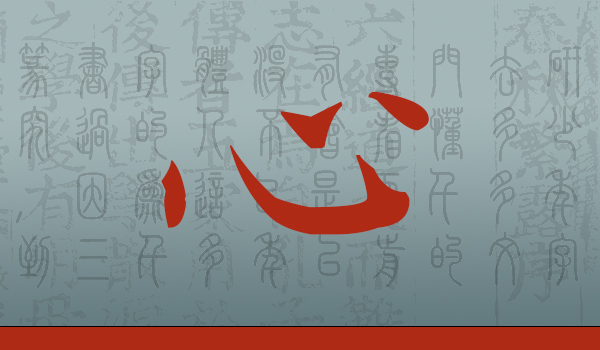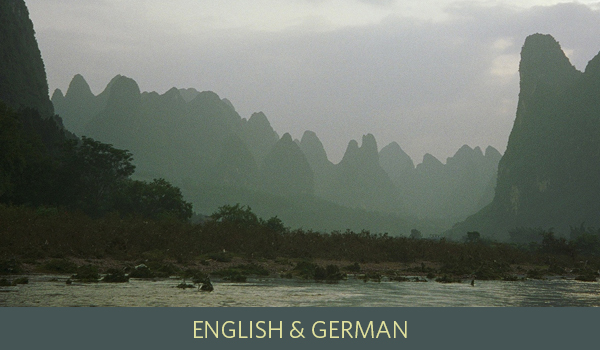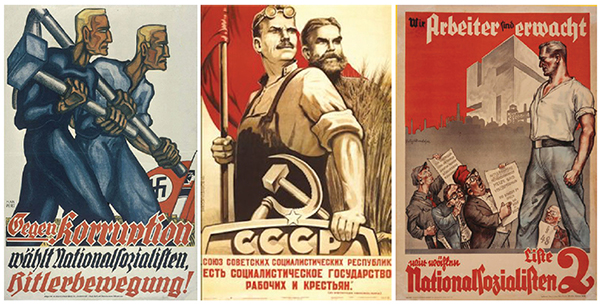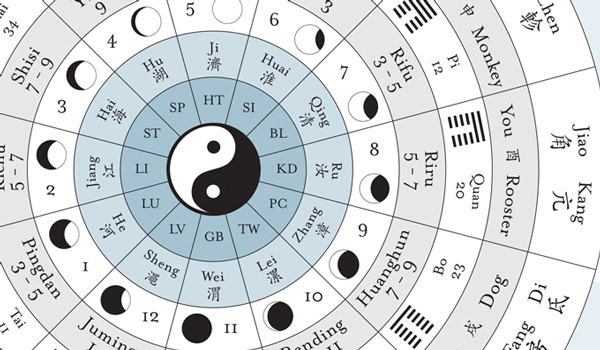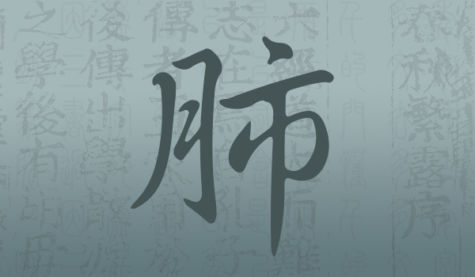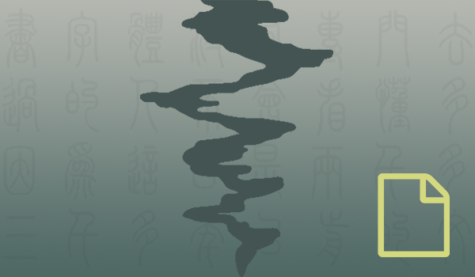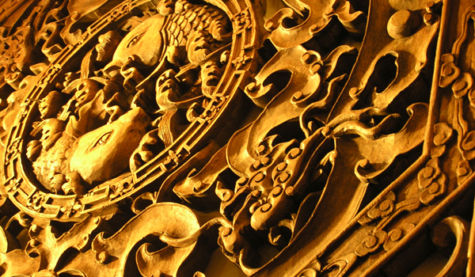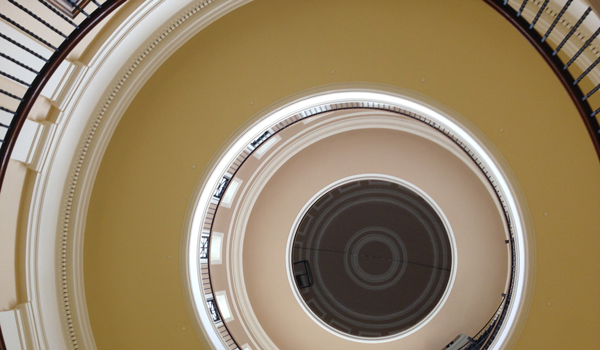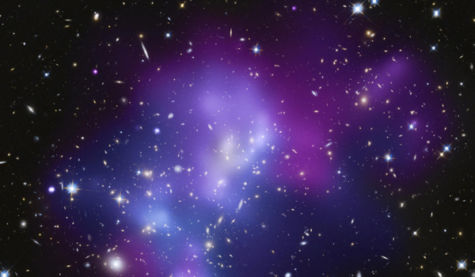Science of Symbols
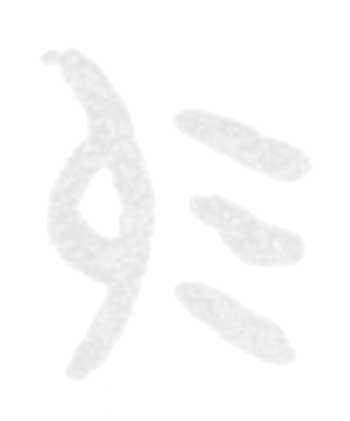 All levels of scholarly discourse in Chinese medicine are presently saturated with a general confusion about the term “science” and its relationship to the roots of the field.
All levels of scholarly discourse in Chinese medicine are presently saturated with a general confusion about the term “science” and its relationship to the roots of the field.
Prof. Deng Zhongjia, former dean of the Foundational Studies Department at Chengdu University of Traditional Chinese Medicine, once aptly summarized this predicament in the following manner: “TCM has made the concept of ‘science’ an equivalent to ‘Western medicine’ while our roots are shoved off into the museum; there they stand on a pedestal gathering dust.”
Prof. Deng’s statement echoes the age-old scholar-physician’s lament over the erosion of the cosmological sources of medical knowledge–the concept of the body as a microcosm, which demands that all bodily micro-sciences remain embedded in a macrocosmic frame of reference. Since the creators of Chinese medicine, now often referred to as Huang-Lao Daoists, took the implications of this maxim further to produce a highly complex system of diagnostics and therapy, physicians of all ages have called for a return to this system’s view of the world. What is remaining unclear, however, is how Chinese master physicians envisioned this return, and what, exactly, they thought was so worth while returning to.
The materials presented in this section introduce the preliminary results of a research project that was conceived to shed light on these questions. Since 1998, Prof. Heiner Fruehauf has directed a detailed investigation of ancient Chinese medical symbolism in cooperation with the CCM Terminology Research Group of the College of Classical Chinese Medicine at National University of Natural Medicine in Portland, Oregon. The focus of this research was to demonstrate how ancient symbols, such as the names of organ networks or acupuncture points, contain very detailed information spanning from the material layer (this is how it looks) to the functional layer (this is what it does) to the macrocosmic layers of space and time (these are the planets and seasons by which it resonates and is influenced). The results reveal a tightly woven system of symbolic references that spell out in detail the multi-layered qualities of macrocosmic and microcosmic reality, including the “how,” “where,” “when,” and “why” of the connection between the Above and the Below.
Gao 皋: The “God” of the 5th Month and Its Defining Relevance for Heart Function in Chinese Medicine
BY HEINER FRUEHAUF
National University of Natural Medicine,
College of Classical Chinese Medicine
The article delves into the significance of "Gao" (皋), the "God" of the 5th month in Chinese cosmology, and its deep connection to heart function in Chinese medicine. Drawing from ancient texts, Heiner Fruehauf explores the multifaceted meanings of "Gao," linked to imperial ranks, the sacred Mt. Song, and spiritual rituals. The month’s symbolism revolves around themes of prayer, sacrifice, and connecting with the spiritual realm, reflected in natural phenomena like the praying mantis and shrike. This exploration illuminates the heart's role in Chinese medicine, symbolizing calmness and spiritual connection, providing a rich, holistic understanding of health and vitality.
Visions of the Baojun: Donald Trump and the Pathological Large Intestine Archetype in Classical Chinese Medicine
BY HEINER FRUEHAUF
This impromptu three part editorial by Heiner Fruehauf is an attempt to make sense of the recent US presidential elections through the constructive lens of Chinese medicine systems science.
Six Conformation Diagnosis in Context: The Six Cosmic Qi (liu qi) and the Six Stages of Qi Transformation (liu jing)
BY HEINER FRUEHAUF
GERMAN TRANSLATION BY MARKUS GOEKE
The six conformations represent another system of symbolic methodology that is of great importance for the practice of classical Chinese medicine. Its origins are related to both yin-yang and five phase element theory, yet it is often the primary diagnostic modality that certain practitioners, especially those trained in the lineage of Shanghan lun herbalism, choose to utilize.
Visionen eines Baojun: Donald Trump und der pathologische Dickdarm-Archetyp in der klassischen chinesischen Medizin
VON HEINER FRÜHAUF
DEUTSCHE ÜBERSETZUNG
VON BIRGIT ZIEGLER
Diese impromptu Editorial von Heiner Fruehauf ist ein Versuch, Sinn der jüngsten US-Präsidentschaftswahlen durch die konstruktive Linse der chinesischen Medizin Systems Science.
An Excerpt from Qianjin yifang (Supplemental Prescriptions Worth a Thousand in Gold) on the Importance of the Acupuncture Point Names
BY SUN SIMIAO (581-682)
TRANSLATED BY HEINER FRUEHAUF
None of the acupuncture names were chosen randomly, all of them contain deep meaning. All point names containing the character for the wood element 木 are related to the Liver. All point names associated with Spirit (shen) 神 are related to the Heart. All point names associated with metal 金 or jade 玉 are related to the Lung. All point names associated with water 水 are related to the Kidney. Similarly, the Spirit’s state of movement is also potentially reflected in the point names. All points with the character Fu 府 (Storage) in their name affect the gathering of Spirit.
Cosmological Thought in China and Europe: Introduction, Yin & Yang
BY FRANK FIEDELER
TRANSLATED BY GABRIEL WEISS
This original translation is the introduction and first chapter from the volume Yin und Yang (Yin and Yang), by the late Prof. Frank Fiedeler, one of the best modern interpreters of the Yijing, and is one of the few scholars who have made the symbolic methodology of Han and pre-Han dynasty thought accessible for the field of Chinese medicine.
Chinese Medicine Holomap with the 28 Stellar Constellations
BY HEINER FRUEHAUF
MAP DESCRIBING THE RESONANCE OF MACROCOSM AND MICROCOSM
For over 25 years, Heiner Fruehauf has led a research project decoding the ancient Chinese science linking macrocosm and microcosm, which so crucially informed the original definition of the 12 organ networks of classical Chinese medicine. Per popular request, he has synthesized this information into a "holomap", which reflects the functional resonance of each organ systems with the 28 stellar constellations, the 12 earthly branches, the 12 tidal hexagrams, the 12 times of the day, the 12 months of the year, and the 12 rivers mentioned in Lingshu chapter 12.
The Classical Pearls Series of Remedies: Positions on the Alchemical Holomap of the Chinese Organ Networks
BY HEINER FRUEHAUF
We are excited to present an informative learning tool and clinical resource — a chart that aligns the remedies in the Classical Pearls Herbal Formulas™ family around the cosmological holomap of the Chinese organ networks that Heiner Fruehauf so often teaches about and has spent over 25 years researching. This chart is primarily to show, at one glance, where the constitutional home of each of each remedy is. The chart includes a short description of how the remedy functions with regard to Chinese medical physiology.
Fei: An Etymological Analysis of the Pictogram for ‘Lung’
BY HEINER FRUEHAUF
The word 肺, in a more specific reference to the specific function of this organ system, is classified by the component 巿 po (in its seal script form, composed of the pictographic components grass 屮and eight 八), meaning “abundant foliage in the wind” (this is a clear reference to the anatomical appearance of the lung lobes, as well as to traditional descriptions of this organ: Chinese texts describe them as “leaves”; see Shijing: 東門之楊, 其葉肺肺 “The poplars at the Eastern Gate, their leaves flutter lung-like in the wind;” Neijing: 肺熱葉焦 “When the lung is hot, its leaves become charred”); note that the rain forest with its prolific canopy of leaves is considered to be the lung of the earth.
Alchemy and Symbolism in Chinese Medicine: A Reading List of Relevant Materials
COMPILED BY HEINER FRUEHAUF
A reading list of materials about alchemy and symbolism in Chinese medicine.
The Science of Symbols: Exploring a Forgotten Gateway to Chinese Medicine, Part 1
BY HEINER FRUEHAUF
This article summarizes the initial results of an ongoing research project conducted by the Acupuncture Point Research Group of the College of Classical Chinese Medicine at National University of Natural Medicine in Portland, Oregon. First published in The Journal of Chinese Medicine (February 2002).
The Science of Symbols: Exploring a Forgotten Gateway to Chinese Medicine, Part 2
BY HEINER FRUEHAUF
This article summarizes the initial results of an ongoing research project conducted by the Acupuncture Point Research Group of the College of Classical Chinese Medicine at National University of Natural Medicine in Portland, Oregon. First published in The Journal of Chinese Medicine (June 2002).
Die Wurzeln der chinesischen Medizin, Teil I
VON HEINER FRÜHAUF
AUS DEM ENGLISCHEN ÜBERSETZT
VON SEPP LEEB
Dieser Artikel fasst die ersten Ergebnisse eines laufenden Forschungsprojekts zusammen, das von der Akupunkturpunkt-Forschungsgruppe des College of Classical Chinese Medicine an der National University of Natural Medicine in Portland, Oregon, durchgeführt wurde. Erstveröffentlichung im Journal of Chinese Medicine (Februar 2002).
Die Wurzeln der chinesischen Medizin, Teil II
VON HEINER FRÜHAUF
AUS DEM ENGLISCHEN ÜBERSETZT
VON SEPP LEEB
Dieser Artikel fasst die ersten Ergebnisse eines laufenden Forschungsprojekts zusammen, das von der Akupunkturpunkt-Forschungsgruppe des College of Classical Chinese Medicine an der National University of Natural Medicine in Portland, Oregon, durchgeführt wurde. Erstveröffentlichung im Journal of Chinese Medicine (Juni 2002).
Correlative Cosmology in Chinese Medicine: The 12 Organ Systems and their Relationship to the 12 Months of the Year, the 24 Seasonal Nodes (jieqi), and the 72 Material Manifestations (wuhou)
COLLATED AND TRANSLATED
BY HEINER FRUEHAUF
Collated and translated from the Yizhou shu (Document of Zhou, fl. 3rd century) and a variety of Han and pre-Han dynasty texts.
Correlative Cosmology: Energetics of the First Month of Spring and Lung Function
COLLATED AND TRANSLATED
BY HEINER FRUEHAUF
In this article of Chinese to English translations, Heiner Fruehauf explores the lung as a metal organ according to the five phase element system. Modern Chinese medicine discourse, therefore, has exclusively focused on this organ’s association with the metal season of fall. In original Neijing cosmology, however, the five phase system is paralleled by a more complex and inclusive system of twelve functional entities that correlate the twelve months of the year with the order of the twelve channel systems that we now refer to as the “organ clock.”
Correlative Cosmology: Energetics of the Second Month of Spring and Large Intestine Function
COLLATED AND TRANSLATED
BY HEINER FRUEHAUF
According to the five phase element system, the large intestine is classified as a metal organ. Modern Chinese medicine discourse, therefore, has exclusively focused on this organ’s association with the metal season of fall. In original Neijing cosmology, however, the five phase system is paralleled by a more complex and inclusive system of twelve functional entities that correlate the twelve months of the year with the order of the twelve channel systems that we now refer to as the “organ clock.”
Philosophical and Cosmological Texts From the Formative Period of Chinese Medicine (The Han and Pre-Han Periods of Chinese Antiquity)
COMPILED BY HEINER FRUEHAUF
Chinese medicine is a microcosmic branch of ancient Chinese philosophy and cosmology. The better one understands the philosophical foundations of Chinese medicine, the deeper one’s knowledge of its core concepts and terminology can be. Theories such as yin and yang, the five phase elements, the hierarchical relationship between matter, energy, and consciousness, the supremacy of spirit, and the twelve organ networks were first mentioned in the Daoist and Confucian classics of the Han and Pre-Han periods of Chinese antiquity (fl. 700 BC - 200 AD) before they appeared in the keystone works of Chinese medicine. The following represents a comprehensive list of relevant philosophical, scientific, and literary works from the formative period of Chinese medicine in English translation.

